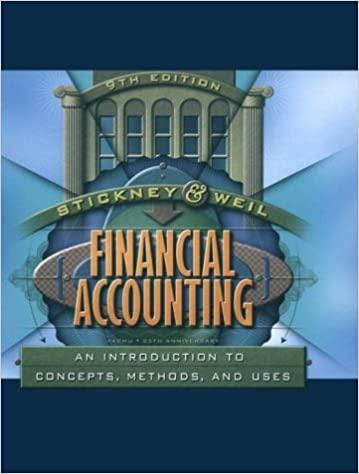Accounting for bonds in a troubled debt restructuring. On January 1, 1985. First National Bank (FNB) acquired
Question:
Accounting for bonds in a troubled debt restructuring. On January 1, 1985. First National Bank (FNB) acquired SIO million of face value bonds issued on that date by Occidental Oceanic Power Systems (OOPS). The bonds carried 12 percent semiannual coupons and were to mature 20 years from the issue date. OOPS issued the bonds at par.
By 1990. OOPS was in severe financial difficulty and threatened to default on the bonds. After much negotiation with FNB (and other creditors), it agreed to repay the bond issue but only on less burdensome terms. OOPS agreed to pay 5 percent per year, semiannually, for 25 years and to repay the principal on January 1. 2015. or 25 years after the negotiation. FNB will receive $250,000 every six months starting July 1. 1990. and SIO million on January 1. 2015. By January 1. 1990. OOPS was being charged 20 percent per year, compounded semiannually, for its new long-term borrowings.
a. What is the value of the bonds that FNB holds? In other words, what is the present value of the newly promised cash payments when discounted at OOPS's current borrowing rate of 20 percent per year, compounded semiannually?
b. Repeat part
a, but use the market interest rate at the time of initial issue. 1 2 percent, compounded semiannually, to calculate the present value of the newly promised cash payments.
c. Consider three accounting treatments for this negotiation (called a "troubled debt restructuring" by the FASB in its Statement of Finamiul Accoiintiiii; Slaiuhinis No. 114).
(1) Write down the bonds to the value computed in part
a, and base future interest revenue computations on that new book value and the new historical interest rate of 20 percent per year, compounded semiannually.
(2) Write down the bonds to the value computed in part
b, and base future interest revenue computations on that new book value and the old historical interest rate of 12 percent per year, compounded semiannually.
(3) Make no entry to record the negotiation, and record interest revenue as the amount of cash, $250,000, that FNB receives semiannually.
Over the new life of the bond issue, how will total income vary as a function of the method chosen?
d. Which of the three methods listed in c would you recommend? Why?
Step by Step Answer:

Financial Accounting An Introduction To Concepts Methods And Uses
ISBN: 9780030259623
9th Edition
Authors: Clyde P. Stickney, Roman L. Weil





